Someone recently sent me an article published in Food Navigator about low fat foods and diets. The article, based on an interview with Professor of Nutrition Science and Policy at Tufts University, Alice Lichtenstein, espoused the idea that ‘low fat’ is too simplistic a message from a nutritional perspective — and that the way high fat foods are being reformulated is not always appropriate. At first I was excited. After all, I’ve been promoting variations of this concept for several decades now. Unfortunately, barely a paragraph into the article, I could see that the world’s establishment nutrition experts still don’t get it when it comes to fat — and, dare I say, despite the title of the article, still subscribe to a “simplistic” understanding of fat despite their protestations to the contrary.
First, let’s examine a little more closely the positions the article and the professor stake out.
According to the article, recommendations to reduce saturated fat intake are largely based on the notion that high levels of saturated fat increase the risk of cardiovascular disease. But then the article goes on to say that unless saturated fat is replaced with other, healthy fats, many studies have suggested that fat reduction could increase the risk of heart disease.
According to the professor, part of the confusion stems from the fact that many people now seem to think that “low fat”‘ and “low calorie” are the same thing. She goes on to explain, “I think in some cases it’s appropriate. For things like meat products and dairy, it is appropriate because you are focusing specifically on taking out saturated fat. But for other products such as cookies and brownies, it’s not that useful.” Her specific concern is that in baked goods fat is often replaced with refined carbohydrates, including sugar, which may actually make an already unhealthy product even less healthy than the original.
Surprisingly, and especially considering that the professor’s primary concern is oversimplification of concepts, she has done just that in her characterization of saturated fat. (We’ll explore that in detail a little later.) She then goes on to compound her error as she incorporates unsaturated fat into her discussion, saying that for baked goods, unsaturated fats such as soybean oil could provide viable alternatives to saturated fats. And then she rolls right into a discussion of dairy, saying, “There is a wide variety of low fat and non fat dairy products available. If [manufacturers] could produce more low fat cheeses that were acceptable to the consumer, that would be good, since we eat so much of it. But we have to be clear about portion size.” (By the way, if you’re interested in my opinion of dairy, check out Dairy Diet Delusions.)
So that’s the article. And given its content, what are my concerns? Why am I saying that the world’s so-called nutrition experts still don’t get it when it comes to fat and that they are guilty of the exact same oversimplification of which they accuse everyone else? Well, to put it “simplistically,” the article:
- Oversimplifies and misrepresents the case against saturated fats.
- Totally ignores the issue of trans-fats — which, incidentally, is also more nuanced than mainstream health professionals make it out to be.
- Makes no mention of omega-3 fatty acids.
- In its representation of how to use polyunsaturated fats, it actually is encouraging you to have more heart attacks and cancer.
Other than those few issues, there’s not much in the article with which to take exception. But let’s examine these concepts in a little more detail.
Fats, the big picture
 It wasn’t that long ago that fat was identified as the number one villain in our diets. Every doctor and food commercial on TV promoted low-fat, lean foods. And we responded: fat consumption in Western society dropped significantly over the last twenty-five years. But surprisingly, obesity soared at exactly the same time, to the point that the U.S. is now among the fattest countries in history (with the rest of the world working hard to catch up).
It wasn’t that long ago that fat was identified as the number one villain in our diets. Every doctor and food commercial on TV promoted low-fat, lean foods. And we responded: fat consumption in Western society dropped significantly over the last twenty-five years. But surprisingly, obesity soared at exactly the same time, to the point that the U.S. is now among the fattest countries in history (with the rest of the world working hard to catch up).
What was wrong with the fat theory? Aren’t fat calories bad for you and don’t they contribute to obesity? The answer is no — at least not when stated, as Dr. Lichtenstein said, in such simplistic terms. As it turns out, there are good fats and bad fats, and I’m not talking about polyunsaturated and saturated fats, as the professor so simplistically did. Again, why anyone would listen to the establishment when it comes to diet and nutrition is still mind-boggling to me. Listening to a doctor (or a nutrition specialist who comes out of the same school of thought) about nutrition, just because they have a “degree” is like listening to a plumber about your clogged arteries just because they specialize in cleaning out clogged pipes.
The current dogma promoted by the establishment when it comes to fat is:
- Fat is unhealthy.
- Saturated fat is bad.
- Trans-fat is bad. (A complete reversal on their part, incidentally, over the last fifteen years. Remember, these are the same people who once pitched the health virtues of margarine over butter.)
- If you have to eat fat, polyunsaturated vegetable oils are the way to go. These are the bottled oils you buy in the store (corn oil, canola oil, and safflower oil).
- Omega-3 fatty acids are probably good for you, but the alternative health community is moving much too fast in adding these fats to all kinds of food.
Unfortunately, the truth is not this simplistic. With that in mind, let’s dig a little deeper, which coincidentally will simultaneously answer the issues raised by the professor that I mentioned earlier.
Is fat unhealthy?
Is fat bad for you? Hardly; in fact, it’s essential for good health! Fats are the ultimate energy storage system. Your body stores fat for long-term energy use. Think of bears that live off their fat for months at a time while they hibernate in winter. On the other hand, if you’re eating every day, your body doesn’t really need to store fat for future use, so what is necessary for survival for bears can be a quick ticket to the cemetery for humans. Nevertheless, even though excess fat of the wrong kind may be deadly, certain fats are essential for life and health and are required in sufficient quantities.
To understand the real story behind fats, it’s worth approaching the issue from two angles, commonsense and biochemistry. But first, since as they say, you can’t tell the players without a scorecard, here are the major “players” who populate the world of fats:
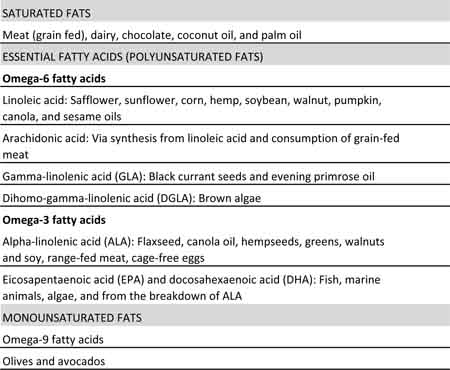
As you will notice, hydrogenated and partially hydrogenated oils are not on the above list. Why? Because they are artificial creations and the primary (but not exclusive) source of trans-fatty acids. Once promoted as a healthy alternative to saturated fats by the medical establishment and nutrition scientists, they are now recognized as one of the primary killers in our diets — with a key exception, which we’ll discuss later. It’s also important to understand that most substances that contain fats or oils actually have more than one kind. Canola oil, for example, contains omega-3s, -6s, and -9s. Meat contains not only saturated fat, but also omega-6s and -3s. The above table shows only the predominant fat that each food provides.
Is saturated fat bad?
One might infer from Dr. Lichtenstein’s statements, that the answer to this question is an unqualified, “Yes, saturated fats are bad for you.” But the less simplistic truth is that not all saturated fat is bad; in fact, a certain amount is essential, and some saturated fats are extremely health promoting. Prolonged experience with the Atkins diet has shown that natural saturated fat does not necessarily raise cholesterol levels and clog arteries (although the diet itself quite likely promotes osteoporosis and colon cancer). The “simple” truth is that the whole issue of saturated versus unsaturated fats is mostly false.
Certain saturated fats are extremely healthy and even essential to good health, such as coconut oil. For a number of years, coconut oil has been vilified by the medical health authorities due to its saturated fat content, but as I have indicated, not all saturated fats are alike. Coconut oil is unique in its structural makeup. It is not only the highest source of saturated fats (92 percent), but included in that number are the medium-chain triglycerides (MCTs), which are extremely beneficial to the body. In addition, approximately 50 percent of these MCTs are made up of lauric acid, the most important fatty acid in building and maintaining the body’s immune system. The only other source of lauric acid found in such high concentrations is mother’s milk.
Trans-Fats — Decidedly Unhealthy
Is trans-fat bad? Absolutely! In fact, in early editions of my book, Lessons from The Miracle Doctors, I called products made with trans-fats (partially hydrogenated oils) the number one killer in our diet. But this is one area that has seen a dramatic change in the last ten years. Whereas at one time medical authorities promoted these products as “healthy” alternatives to saturated fat products such as butter, these same authorities gradually became aware (about thirty years after the alternative health community) that trans-fats were, in fact, decidedly unhealthy.
They are major contributors to cancer, heart disease, and diabetes. Over the last couple of years, government agencies have jumped on board and started pressuring food companies and restaurants to ban trans-fats from our diets. And even if late, they are correct. These oils are absolutely unnecessary and have no place in your diet or in any of the foods you eat — if you wish to be healthy.
CLA
However, as I mentioned above, there is an exception. Yes, synthetic trans-fats created through hydrogenation are extremely harmful, but naturally occurring trans-fats, not so much. In fact, some natural trans-fats are downright healthy. One such trans-fat is CLA (conjugated linoleic acid). CLA is both a trans-fatty acid and a cis-fatty acid. The cis bond causes a lower melting point and may account for its health benefits. What health benefits are we talking about?
Well, for one thing, studies have indicated that CLA is a potent cancer fighter across a wide variety of tumors, including cancers of the skin, breast, prostate, and colon. And whereas most anti-cancer agents block only one of cancer’s three stages (initiation, promotion, and metastasis), very small amounts of CLA have been shown to block all three.
In addition, CLA has been found to lower LDL levels and prevent bone loss and atherosclerosis, while at the same time helping to build the immune system.
And where is CLA found?
In the meat and dairy of grass fed cows. In fact, it is produced naturally from linoleic acid by bacteria in the stomachs of herbivores (such as cows). It can also be produced synthetically by heating linoleic acid in the presence of a base. However, there may be some issues as to whether synthetic CLA performs as well as natural CLA. And take note: I did say grass fed cows. As it turns out, grazing animals have 3-5 times more CLA than grain fattened animals — providing yet one more reason for consuming grass fed animal products.
As a side note, the breast milk of mothers who consume foods high in CLA is likewise high in CLA, providing tremendous health benefits for the baby. If you are looking to supplement CLA, your best bet is probably butter oil — made seasonally from May through October, from the milk of cows feeding on rapidly growing pasture grass. Rapid growth is the key to high CLA levels, not to mention high alkylglycerol content, and naturally occurring vitamin K2 (the Activator X first identified by Dr. Weston Price).
Polyunsaturated vegetable oils — proceed with caution
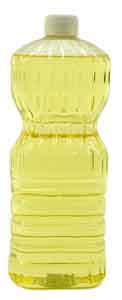 Unfortunately, the same government authorities and health experts who are now warning us away from trans-fats are pushing us towards polyunsaturated vegetable oils such as the soybean oil the professor recommended. But are these oils good for us? Not really. Because of the quantity and quality of polyunsaturated fats in our diets, they have replaced trans-fatty acids as the number one killer in our diets — a statement that probably comes as a surprise to some of you.
Unfortunately, the same government authorities and health experts who are now warning us away from trans-fats are pushing us towards polyunsaturated vegetable oils such as the soybean oil the professor recommended. But are these oils good for us? Not really. Because of the quantity and quality of polyunsaturated fats in our diets, they have replaced trans-fatty acids as the number one killer in our diets — a statement that probably comes as a surprise to some of you.
First, let’s talk about why essential fatty acids (EFAs), a group to which polyunsaturated oils belong, are so important.
Among other things, they are the main components of all cellular membranes — inside and out — where they protect against viruses, bacteria, and allergens. They are the key building blocks of all fats and oils, both in our foods and in our bodies. They play a key role in the construction and maintenance of nerve cells and the hormone-like substances called prostaglandins and help decrease cholesterol and triglyceride levels in the blood. The bottom line is that essential fatty acids are vital to our health, the primary healing agents in the body. According to some estimates, as many as 90 percent of all people are deficient in at least one of them.
In point of fact, all fats are actually fatty acids, consisting of one part fat (which is not water soluble) and one part acid (which is). Omega-3 and omega-6 fats are not only good for you, they are, in fact, essential — your body can’t produce them, which means you must get them in your diet. However, due to the extreme sensitivity of omega-3’s to light and oxygen, they have been removed from virtually all processed foods so that the foods have a longer shelf life. The sad fact is that our lack of these key EFAs has been linked to many of today’s diseases and afflictions, including hair loss, lack of energy, skin problems, heart and circulatory problems, and immune disorders (including arthritis). And thus an entire industry has emerged over the last five years devoted to putting these fats back into our diets.
Now let’s talk about the problem associated with EFAs. For most of human existence, we have eaten foods containing omega-6 fatty acids (linoleic acid and arachidonic acid) and omega-3 fatty acids (DHA, EPA, and alpha-linolenic acid) in a ratio of about 1:1 to 2:1. Over the last fifty years, however, that ratio has changed to 20:1 or 30:1, even in some cases as high as 50:1.
Our diets now include huge amounts of highly refined oils that are extracted from plants and used for cooking or in prepared foods (at the insistence of medical authorities). These oils — corn, safflower, cottonseed, peanut, and soybean — are all high in omega-6s. Soybean oil, incidentally, runs 7:1 in favor of omega-6. Corn oil runs 46:1. And safflower oil is off the charts at an astounding 77:1. (Canola oil runs about 2:1) As a consequence, we have dramatically decreased our intake of omega-3’s as found previously in whole grains, beans and seeds, and seafood — and now get our omega-3’s primarily as the secondary fatty acid in our highly refined bottled oils and meat, which accounts for the increasing distortion of the fatty acid balance toward omega-6’s.
In other words, for most of us, we face the cruel paradox that the higher our intake of omega-3s, the worse the omega-6/omega-3 fat ratio gets in our bodies. This crops up in areas of our diet that we don’t even think about. For example, grass-fed beef contains omega-6 and omega-3 fatty acids in close to the healthy 2:1 ratio. But grain-fattened beef, which most people eat, contains fat in an imbalanced ratio that parallels the ratios found in the grains used to fatten them — 20:1, 30:1, and even 50:1 in favor of omega-6.
There are numerous studies that show how deadly this is. For example, a Korean study found that the ratios of serum omega-6 to omega-3 fatty acids were highly indicative of prostate cancer risk. The researchers concluded that omega-6 polyunsaturated fatty acids have a tumor-promoting effect while omega-3 acids have a protective effect.
NEFAs
And there is yet another problem associated with overconsumption of omega-6 fatty acids such as found in soybean oil — the build-up of NEFAs (non-esterified fatty acids) in the blood. Studies have found that NEFAs are implicated not just as a primary risk factor in sudden heart attacks, but there is also growing evidence that they are implicated in the onset of cancer as well! In other words, virtually every single bottled vegetable oil and processed food you buy in the supermarket (excluding olive oil) is potentially killing you. (Note: although mainstream nutrition experts, including Dr. Lichtenstein, might be “shocked” by this information, it will barely elicit a knowing nod from regular readers of this newsletter.)
Supplementing with omega-3 fatty acids
Right now, omega-3 fatty acids are “hot.” As I predicted several years ago, they have become one of the primary additives now found in functional foods. And obviously, based on what we’ve already talked about, that’s a good thing, right?
Sort of . . . well, almost . . . but not necessarily!
Omega-3 fatty acid comes in six forms, but three are of primary interest to us:
- Alpha-linolenic acid (ALA) is the complex form of omega-3 that’s found in most plants, such as flax. It’s not actually useful to the body until it’s broken down into its two constituents, EPA and DHA.
- Eicosapentaenoic acid (EPA) provides profound anti-inflammatory activity, enhances the immune system, and provides numerous cardiovascular benefits, including thinning the blood and lowering blood pressure.
- Docosahexaenoic acid (DHA) is a major fatty acid in sperm and brain phospholipids, and especially in the retina. Dietary DHA can reduce the level of blood triglycerides in humans, which may reduce the risk of heart disease. It also appears to play a major role in preventing and relieving Alzheimer’s disease and depression.
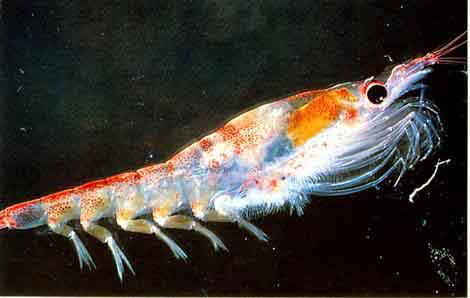
The primary sources of ALA supplementation are vegetarian, most notably flaxseed. The primary sources of EPA and DHA are fatty fish such as salmon and krill (cold water, shrimp-like invertebrates). Most of the alpha-linolenic acid we consume must be converted into DHA and EPA. Unfortunately, this process, which is governed by a particular enzyme known as delta-6 desaturase, is significantly inhibited (up to 50 percent or more) if there is an overabundance of linoleic acid in the bloodstream. And high levels of linoleic acid in the bloodstream are a direct result of excessive omega-6 fatty acid consumption — a major problem in the developed world today as we’ve already discussed. The delta-6 desaturase enzyme is “used up” in the desaturation process involved in getting rid of the excess omega-6 fats and thus is no longer available for converting ALA to its usable omega-3 components, EPA and DHA. The enzyme is also inhibited by the presence of trans-fatty acids and by high levels of insulin, a problem today with the high incidence of obesity and diabetes. And, finally, the process of delta-6 desaturation slows with aging.
Each of these factors can lead to an accumulation of ALA, which is counterproductive; but alleviating that build-up is relatively easy:
- Stop using all plastic fats — all hydrogenated vegetable oils and all super-refined vegetable oils. The high temperatures that these oils are exposed to dramatically changes their structure. We’ll talk more about this in a moment, but for now just know that highly refined and cold-pressed oils are not the same, and they behave very differently in the body.
- Stop cooking with oils high in omega-6 fats, such as safflower, sunflower, and corn oils, and instead shift to walnut, olive, coconut, and avocado oils, as well as organic butter (in moderation). And if you need to use oil for high-temperature frying or sautéing, use small amounts of avocado oil or rice bran oil.
- Shift your diet away from high-glycemic, refined carbohydrates and move to a more Mediterranean style diet to help lower insulin levels.
- Finally, an effective method of counteracting slowed desaturation of linoleic acid is to provide the delta-6 desaturated metabolite, gamma-linolenic acid (GLA), directly through supplements. Desaturation of linoleic and especially alpha-linolenic acid increases dramatically in the elderly with GLA supplementation. The best sources of GLA are black currant seed oil, evening primrose oil, and borage oil. One other advantage to GLA supplementation is that much of the GLA is converted to DGLA, which competes with and prevents the negative inflammatory effects those arachidonic acid otherwise cause in the body.
An obvious question comes up when talking about ALA: Why bother supplementing with something like flax seed oil if you can just take fish oil or krill oil supplements and not have to worry about conversion? The answer is that each source has its own benefits. Fish oil is good because it is already broken down into the useable EPA and DHA forms. Krill oil contains phospholipids specially integrated with omega-3 essential fatty acids. This unique structure provides important cell membrane building blocks in the right ratios for use by the body. And as for flaxseed oil, although it needs to be broken down, it also happens to be outrageously high in lignans, phytochemicals shown to have significant anti-cancer properties. Flax picked up a bad rap several years ago based on a bogus study that said it may promote prostate cancer. But no one in the study was supplementing with flax oil — the subjects’ high ALA readings came as a result of other oils and fats they were eating, particularly from meat. In other words, the increased incidence of cancer associated with ALA was far more likely the result of a wildly skewed omega-6/omega-3 ratio. (Note: although Argentinean beef is largely raised on grass, a substantial portion is nevertheless “finished” for 60-90 days on a grain-based diet to fatten them up.) So, the “warnings” concerning flax misleadingly damn a valuable component of a healthy lifestyle based on faulty information and let the true killers — highly refined, high omega-6 vegetable oils — go free.
Rancidity
 Another important factor to remember, particularly as omega-3 fatty acids are being introduced into functional foods en masse, is their sensitivity to heat, light, and processing. In other words, they tend to go rancid quickly, and their value may be somewhat negated (and even turned upside down) in many of these foods if the manufacturers don’t know what they’re doing.
Another important factor to remember, particularly as omega-3 fatty acids are being introduced into functional foods en masse, is their sensitivity to heat, light, and processing. In other words, they tend to go rancid quickly, and their value may be somewhat negated (and even turned upside down) in many of these foods if the manufacturers don’t know what they’re doing.
In fact, all oils are sensitive to heat, light, and exposure to oxygen. Over time, depending on the level of exposure and the particular oil, they can turn rancid — noticeable as off-taste and odor. Oils turn rancid through two chemical processes, hydrolysis and oxidation. Both affect the taste and odor of the oil and can degrade its nutritional value. But our primary concern when it comes to health is oxidation, aka free radical production, which can present major health problems.
Rancidification can produce large numbers of highly reactive free radicals and is to be avoided. To delay the development of rancid oil, it is best to store all oils in the refrigerator or a cool, dry place. On the other hand, most highly refined oils that you buy in the supermarket can easily keep for a year or longer — in some cases, almost indefinitely — which is why they are refined in the first place, for longer shelf life. But there are other health tradeoffs involved in using highly processed, refined oil. Extra-virgin olive oil, on the other hand, will also keep about a year after opening without the trade offs. Other unrefined vegetable oils that you buy in the health food store will keep about six months. Rancidity is only a problem for unsaturated fats and oils; saturated fats such as coconut oil do not turn rancid.
Refining
As just mentioned, refining oils to prolong their shelf life presents its own set of health risks. For more on the actual process, check out “Refined to Death,” but for now, let’s just focus on the health issues.
- As part of the refining process, beneficial fatty acids such as CLA (discussed earlier) are removed by treatment with a lye solution to inhibit spoilage in the final product.
- During the refining process, the oil then passes through a series of heaters, where the temperature is raised high enough for efficient steam distillation and deodorization — upwards of 200°C (450°F). At these temperatures, the fundamental structure of many oils is changed into a different form of fatty acid through a process called isomerization. These new forms are not beneficial to the human body.
- High heat may also cause trans-fatty acids to be formed.
- The final product is oil that is virtually colorless, odorless, and tasteless, and which can last for years in a bottle with no danger of spoilage. On the other hand, it has no connection with the beneficial oil that was originally contained in the seed or nut. It is now a “plastic fat,” fundamentally changed in structure and that offers no benefits to the human body — a plastic fat that is actually quite harmful. In addition, all of the beneficial phytochemicals (such as the lignans, which are an integral part of the oil complex and play a key anti-cancer role) have been removed.
Conclusion
We can now see that on one hand Food Navigator and Professor Lichtenstein were indeed correct when they said that “Low fat” is too simplistic a message from a nutritional perspective. On the other hand, we can also see that they were more than a little simplistic themselves when they said that the major profundity was to use soybean oil in place of saturated fats in baked goods.
As we have seen, the issue of dietary fats is far more nuanced than “saturated fats bad — polyunsaturated fats good.” In fact, when comparing coconut oil to a bottle of refined safflower oil, you could, and should, make the exact opposite statement. Given that you really need to pay attention to all of the issues raised above when incorporating fats and oils in your diet, are there any “simplistic” golden rules we can keep in mind to help us navigate our way through the muddle? As long as you remember that these are indeed simplistic suggestions, you can hold onto the following.
- Choose natural over refined.
- Make choices that help move the omega-6/omega-3 balance back closer to the ideal 1:1 or 2:1.
- Avoid high omega-6 vegetable oils found in your supermarket.
- Incorporate more omega-3 oils in your diet.
- Supplement with GLA.
- Use avocado or rice bran oil for high temperature cooking — and coconut, olive, and walnut oil for low temperature cooking, and olive oil for salad dressings.
Dr. Lichtenstein concluded her interview by calling for the food industry and health professionals to work together. “If all can partner together to come out with a consistent message that is evidence-based, we would be better off,” she said. “…The US population — and others around the world — could always benefit from more public health education, and the focus should really be on energy balance.”
I agree wholeheartedly with her! Better nutrition/health education would greatly benefit people all over the world. Unfortunately, that education is not likely to come from mainstream nutrition experts…at least not yet. Then again, perhaps with a little help, maybe we can eventually get them up to speed so they’re not quite so “simplistic” with their advice.






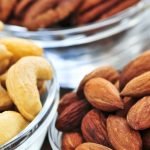
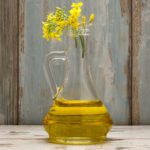
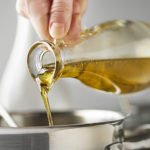
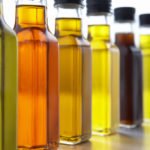
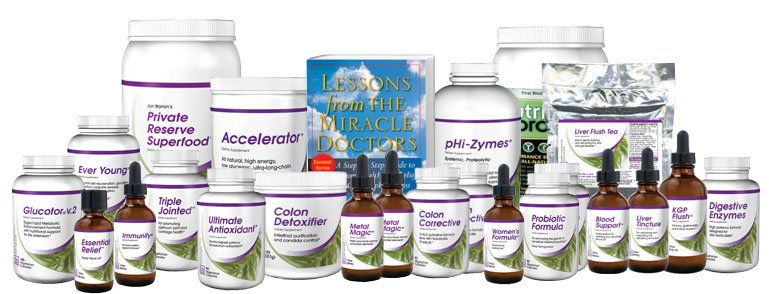


This piece only goes half way
This piece only goes half way to explaining what good fat is. What about the un-mentioned grass fed meats as a source of healthy saturated fat. After all Paleolithic times, us humans where not vegetarians. Our canine teeth got plenty of excersize chewing on fresh killed animals. Vegetables where non-existent and a few roots where available seasonally.
Google: paleo diet
paleo health benefits
I just can’t imagine health professionals writing pieces like this, leaving out more than half the health equation?
curt
Great article Jon,
I hope it
Great article Jon,
I hope it goes a long way to overcome the great wall of ignorance that abounds regarding fat facts. I grew up on a small farm in the 1930s and 40s where our diet consisted primarily of large amounts of dairy, mutton and eggs, all home grown. I remember that nearly all our cooked meals were dripping with mutton fat which we all loved, yet we have all survived into our 70s and 80s and are all still in pretty good health. Your article has explained a number of matters on the subject of fats to my satisfaction.
Keep up the good work,
Kind regards,
Fabian Foale.
Qld Australia.
Thank you, Jon, for the
Thank you, Jon, for the opportunity to comment. To start with, "Cancer" cannot be lumped in to any equation per se, because it is a SPECIAL Biological Program of Nature. Having said this, there are certainly many reasons for this program to 'kick in', not the least of which are certain absenses of nutrients within our bodies, which compel Mother Nature to invoke it. Also not all "Cancers" have to do with a biological reason. Parkinson, MS and Alzheimers comes to mind. Each "Cancer" is specific to the brain area involved and there cannot be any metastasis. All "Cancers" are governed by their respective areas of the brain and they cannot and do not 'jump across' these bounderies. – Omega 3 and Omega 6 EFAs each have a very specific area of influence, namely: Omega 3s are anti inflammatory, while Omega 6s support inflammation. Both are necessary to keep the body functioning and repaired and healthy. I follow Dr. Schnitzer's regimen of normal nourishment and I balance the consumption of raw , ground grain by adding flax seed oil. Also the oil of my choice for salads is flax seed oil as well. In conclusion may I say, that I find life a most interesting exercise in diversity.
Where does Cod Liver Oil fit
Where does Cod Liver Oil fit into the scheme of things?
Is it possible to have too
Is it possible to have too much Omega 3 versus Omega 6? My diet consists of raw and cooked vegetables, olive and coconut oil, ground flax seed, small amounts of meat once a week, fruit and coffee. I supplement with fish oil capsules. My problem here is that I am gaining weight. My diet is, in my opinion, very good. No processed food, no fast food, no junk food. I exercise regularly and do not overeat.
What about grapeseed oil for
What about grapeseed oil for higher temperature cooking? I have always heard grapeseed oil is good for you. Please advise. THanks,
WEndy Behr
Nice article as always, Jon.
Nice article as always, Jon. Just a small point- does flax oil contain lignans? If I’m not mistaken most don’t. Some will specifically say that they contain lignans although I think most of them end up sticking to the bottom of the bottle where they essentially are not found by the consumer.
Just a small insignificant point. Thanks for the article.
I have read that coconut oil
I have read that coconut oil will raise your cholesterol and that there are many side effects to taking CLA. Should I be concerned about this?
Here are a few answers to the
Here are a few answers to the questions in the comments below:
Raw virgin coconut oil is healthy and does not raise cholesterol. In fact, a diet using liquid corn oil will lead to cholesterol deposits faster than a diet using natural coconut oil. On the other hand, refined coconut oil as used in many manufactured foods is not healthy.
As for CLA, natural CLA as found in butter oil has no health problems. Synthesized CLA as found in most capsules may or may not have some issues. The jury is still out.
High lignan flax oil is oil that still contains the fine seed material suspended in the oil. Over time it will settle to the bottom of the bottle and may cake and stick. The trick is to get the oil when it’s fresh and to shake the bottle daily before use to keep the seed material from caking. On the other hand, my preference is actually for freshly ground flax seed, which not only contains the oil, but the fiber, and 100% of the lignans.
Grapeseed oil has a smoke point of about 420 degrees F, which means it’s safe for moderate high heat cooking. But avocado oil has a smoke point around 100 degrees higher.
Margaret, have no fear. Your diet as you describe it is not going to provide an overabundance of Omega-3 fatty acids. On the other hand, keep in mind that all oil (healthy or otherwise) is calorie intensive. Each tablespoon of oil contains about 120 calories. That means that a single salad with dressing on it could easily contain 360 calories just from the oil. Add in a couple of hundred calories from the coconut oil used to cook your vegetables, and you’re looking at a surprising amount of hidden calories.
Cod liver oil is fish oil. It fits in with fish oil – high in omega-3 fatty acids, and also high in vitamins A, D, and E. However, unlike most fish oils which are extracted from the flesh of fish, cod liver oil is extracted from the fish liver. That means it is more likely to be contaminated with heavy metals. You will want to be sure that the oil you use is certified low in contaminants.
Harald, glad you’ve found an outlet to share your ideas on cancer.
Thanks, Fabian.
Curt, are you referring to the newsletter above, because your comment makes no sense. The article refers several times to the health benefits associated with grass fed meat and dairy. However, it is not an article specifically about grass fed animal fats. It is an article about all fats – and explains where grass fed animal fat fits into that spectrum. The bottom line is that Jon didn’t leave out a discussion of the issue; he just didn’t feature it since that wasn’t the focus of the article.
How does pine nut oil qualify
How does pine nut oil qualify ? Does it have any special properties ?(It is greatly prized by the Siberian peoples in Russia)
Excellent information. Thank
Excellent information. Thank you.
I find the whole cooking oil
I find the whole cooking oil thing odd anyway. I’m almost 50 and have never purchased a bottle of cooking oil. I love extra virgin coconut oil and eat flax meal with gmo free protein powder everyday, which I find as pleasurable as candy. I wouldn’t worry about too much omega 3. Too bad krill oil is so expensive.
Good article about old hats. The one glaring omission, as usual, is that this entire phenomenon was intentional. Can’t have too many healthy rabble running around out there… let’s exploit them as we slowly kill them off.
The overall analysis is good,
The overall analysis is good, but the author still repeats the same cliche of the "excess omega 6's against reduced or inexistant consumption of omega 3's, in fact all "experts" on this point contradict themselves. The consumption of omega 6 through refined or higly refined oils should not count as "omega 6" simply because after the extensive refining process none of it is left, a great Bio-Chemist Dr. Catherine Kousmine states: "Essential Fatty acids are very fragile substances which cannot be exposed to light, heat and oxygen neither manipulated at pharmaceutical levels in any way " I agree with her, fatty acids are atomic substances, carbon and hydrogen molecules. Fatty Acids are the buildign blocks of blood cell membranes, it is absurd even to consider fatty acids in an industrially processed sequence to have any "life" left in it, the comparison should be made betweeen excess consumption of Cis-Cis Omega 6's and Cis- Cis Omega 3's, not between refined oils which contained Omega 6's while the oils were in their original enclosed seeds… Also the comp;arison should be made of a degraded Omega 6 and its consequences to health (diseases of the central nervous system by lack of healthy essential fatty acids) and healthy omegas 3 and 6 and so on. Intaking overly heated, chemically degraded and manipilated Omegas in their respective oils is not a stick to measure anything. on another issue, Lignans in Flax seed oils are present when the manufacturer micronizes the residual cake and adds it back into the oil, a recomended amount is about 25 mg per liter. Thank you for a very interesting and effortfull explanation. You are getting close, I still suspect there is a hidden aganda to bennefit the Krill and Fish oil industry. If the theory that we, humans , 50% have inability to produce dha and epa, as Mark Twain said "half of the world's population should be dead" Ivan
—
RESPONSE:
The consumption of omega 6 through refined or higly refined oils should not count as "omega 6" simply because after the extensive refining process none of it is left, a great Bio-Chemist Dr. Catherine Kousmine states: "Essential Fatty acids are very fragile substances which cannot be exposed to light,heat and oxygen neither manipulated at pharmaceutical levels in any way " I agree with her, fatty acids are atomic substances, carbon and hydrogen molecules. Fatty Acids are the buildign blocks of blood cell membranes, it is absurd even to consider fatty acids in an industrially processed sequence to have any "life" left in it, the comparison should be made betweeen excess consumption of Cis-Cis Omega 6's and Cis- Cis Omega 3's, not between refined oils which contained Omega 6's while the oils were in their original enclosed seeds… Also the comp;arison should be made of a degraded Omega 6 and its consequences to health (diseases of the central nervous system by lack of healthy essential fatty acids) and healthy omegas 3 and 6 and so on.
I think we will have to agree to disagree on this point.
Intaking overly heated, chemically degraded and manipilated Omegas in their respective oils is not a stick to measure anything.
One thing that it quite clearly measures is your likelihood of disease and illness – particularly heart disease. Production of NEFAs in the body is directly related to consumption of the “chemically degraded and manipulated Omegas.”
on another issue, Lignans in Flax seed oils are present when the manufacturer micronizes the residual cake and adds it back into the oil, a recomended amount is about 25 mg per liter.
Absolutely correct.
Thank you for a very interesting and effortfull explanation.
You’re welcome. I will give Jon your thoughts.
You are getting close, I still suspect there is a hidden aganda to benefit the Krill and Fish oil industry.
Be very curious to know what that agenda is since Jon Barron neither formulates anything with added omega oils in it, nor sells anything with added oils in it. The closest you can come is his use of ground flax seed in his superfood and meal replacement formulas.
If the theory that we, humans , 50% have inability to produce dha and epa, as Mark Twain said "half of the world's population should be dead"
But that’s not what Jon said at all in his newsletter. He said that we absolutely have the ability to produce DHA and EPA through the breakdown of alpha linolenic acid (which is why he recommends flax) – but that ability is severely compromised by heavy consumption of the “chemically degraded and manipulated Omegas” that you referred to above.
The Baseline of Health Team
Thanks Jon. I always enjoy
Thanks Jon. I always enjoy your information. I am a holistic nutritionist and can’t wait until the others catch up. Won’t hold my breath.
Did you know that fish has a different structure than us? I have studied information on a mammalian source of omega 6 and omega 3 for over 2 years now which has provided me with some solid information. It makes sense when I have conducted field observation studies. I have seen results within minutes. (I was one of them. Even though I was taking fish oils, I felt an immediately difference in my brain.) I understand that fish is naturally high in omega 6s whereas the marine mammal source is balanced 1:1 omega 6 to omega 3. Open to sending you some info.
What do you think about how people cook the vegetables oils further to what is on the packaged foods. My new understanding is that it changes to trans fats. What have you heard?
I was told corn oil was 80:1 omega 6 to omega 3. So it is perhaps lower.
I always recommend to my clients to keep the olive oil in the fridge because it oxidizes immediately and only can be detected when taking it straight…My sister learned this the hard way when she was doing a liver/gallbladder flush.
Happy to share and to learn. Jon…you always give good information. It often validates info for me too.
Have a healthy day! Look forward to hearing from you.
Warmest regards,
Cheryl
Toronto, Canada
I'm lucky enough to live
I’m lucky enough to live 4,000ft up in the Carpathian Mountains, with grass-fed cows living on organic wildflower meadows. I get my milk from the neighbour’s cow, freshly squeezed and unpasteurised. I know there are some risks drinking raw milk but I believe the health benefits to outweigh the risks by a huge factor. Can you say anything about pasteurisation of milk and its effects?
Great article, thanks.
My problem here is that I am
My problem here is that I am gaining weight. My diet is, in my opinion, very good. No processed food, no fast food, no junk food. I exercise regularly and do not overeat.
There are 4 major reasons for
There are 4 major reasons for weight gain: 1. Poor diet 2. Lack of physical activity 3. Sleep deprivation/poor quality of sleep 4. Lack of stress relief It seems that you are taking care of only 2 of them. Make sure that your sleep habits are good and you get enough quality sleep. Stress management is crucial in weight control. Unbalanced chronic stress has been linked to weight gain (especially arourd the waist) and risk for heart disease, diabetes, cancer, depression and memory loss. Dr. Nelly Stoyanova
This reference indicates that
This reference indicates that coconut oil raises cholesterol – but not heart disease: http://www.ncbi.nlm.nih.gov/pubmed/7270479
Why does anyone still care
Why does anyone still care about cholesterol? High cholesterol does NOT CAUSE HEART DISEASE OR HEART ATTACKS. Period.
In fact, the Framingham Heart Study – the largest ongoing heart study ever done in human history – clearly and irrefutably shows that if your HDL is high enough, your “total” cholesterol can be well above 300 and you will have almost zero chance of heart disease.
And that’s not to even mention Ancel Keys – who was an economist, not a scientist, by the way – and his bogus “country” studies that started this whole mess.
The only thing you’re doing by lowering cholesterol is making yourself sick. You’re subjugating your own ability to produce energy for every cell in your body (CoQ10), harming your production of DNA (DHODH), and blocking your ability to produce testosterone.
Why would you want to do that?
Great article!
A hundred
Great article!
A hundred years ago cancer, heart disease, and diabetes were harldy an issue. We cooked with saturated fats (omega 9)… lard, butter, tallow, drippings ect … Come along vegetable oils (high in omega 6) in the 20th centuary and … so comes along cancer, heart disease and diabetes.
Sat fats actuall protects the other fats from going rancid in the body.
Its plain and simple, the high omega 6 content in veg oil throws the body of wack and invites in disease. We need to get back to the sat fats. Cook like your grandma and papa did.
Here,Hear! How true! My
Here,Hear! How true! My father ate eggs every day for breakfast until they said eggs contained too much cholesterol in them. Then he added oatmeal every other day with an occasional sour dough pancakes and bacon on the weekends. Mother was raised on cows milk, grass feed as they had their own cow when she was young. She’s now 90 and going strong and Pa lived to 86. He was killed in a car wreck.
Kindly comment on palm oil.
Kindly comment on palm oil. Can it be used in high temperature frying(plantains, fish and meat)? Is it as good as coconut oil? Is it’s saturated fat equally beneficial? I ask because this oil is quite common in Africa and within reach even though most homes would rather go for hydrogenated oils?
Coconut oil has a great many
Coconut oil has a great many health benefits, but it is not good for high temperature cooking. It’s smoke point is about 350 degrees F (177 C). Palm oil is very different from coconut oil in composition. Palm oil is 40% saturated and 60% unsaturated. The saturated portion of coconut oil is largely lauric acid, which is very healthy. The saturated portion of palm oil is palmatic acid, which tends to push up triglyceride levels – not so healthy. On the positive side, though, the unsaturated portion of palm oil is a monounsaturated oil, just like olive oil. But unlike olive oil, palm oil’s natural resistance to oxidation makes it a healthier and safer oil for cooking or deep-frying. The smoke point for palm oil is a much higher 455 degrees F (235 C). Then again, the smoke point for avocado oil is 520 degrees F (271 C). And rice bran oil, which is less expensive, has a smoke point of 490 F (254 C).
Refined oils are bad! But why
Refined oils are bad! But why almost all fish oil supplem-s are ultra refined, is it helthy, and how can they still be rish in EFAs, etc. after prossesing?
The processes for extraction
The processes for extraction in fish and krill oil supplements is far, far different than that used in vegetable oils.
Krill oil is extracted using a simple solvent — grain alcohol and water in your better versions. Acetate in the cheaper versions, which you probably want to avoid.
Fish oil is refined through vacuum distillation.
Again, not even close to what’s done to commercial vegetable oils.
THANK YOU SO MUCH FOR THIS
THANK YOU SO MUCH FOR THIS INFONMATION.
"nad" needs to learn how to
“nad” needs to learn how to spell and proof read his/her comments before posting.
I have been buying some
I have been buying some coconut oil localy and it has not taste or smell. While I was in Florida last winter I bought some there and it really had a strong coconut smell and taste. Are both good for you or is one better than the other.
I've read that krill oil's
I’ve read that krill oil’s digesting in small intensils, not in the stomach.
It’s imposible for me to swallow gellcups,so I cut it & get the stuf.
Does it mean that oil still will be digested the same way?
No fat begins to digest in
No fat begins to digest in the stomach unless you’re consuming fat digesting enzymes at the same time. For the most part, fats of any kind don’t start breaking down until they reach the digestive tract. In the same way you can have cod liver oil in capsules or by the spoon, you can do the same with krill oil.
Everything above is
Everything above is essential. One mor question: What about serrapeptase, that been used in Europe for more than 30 years, Kind Regards, Kari Heinaenen
Could someone please tell me
Could someone please tell me what they think of coconut oil kept in plastic containers. I had read that this might be particularly bad as the oil would react strongly with the plastic?
Another question concerns washing food. I use a fruit and vegetable spray but am doubtful if that is sufficient. The spray just runs off some of the ‘shinier’ fruit and veg. I had read that steeping the produce in a water and vinegar mix for 5-10 minutes before using the spray could be good. But i don’t want to have to spend the time and a considerable amount of vinegar every few days making up quite a large container of this mixture.
Would i be able to just put a lid on the container and reuse the water/vinegar mix numerous times, or would it go ‘off’ or become contaminated.
Sorry for the length of the post and i would be very grateful for an answer.
Thanks. Tom
The hard plastic used for
The hard plastic used for packing is quite stable and unlikely to react with the coconut oil. That said, virtually all of the best brands use glass containers.
The shininess comes from the wax coating used on some commercial fruits to make them “appear” more appetizing. Simply spraying and rinsing is unlikely to break that down. However, spraying and rubbing or using scrub brush for 30 seconds, and then rinsing will probably get most of it off. Soaking in a vinegar wash can indeed dissolve the wax –at which point the wax and any pesticides locked into it are now in the water. You really don’t want to be reusing it at that point.
Thanks very much for the
Thanks very much for the reply 🙂
Can i trouble you to ask what ratio of vinegar to water you would recommend?
Cheers
http://www.npr.org/templates
http://www.npr.org/templates/story/story.php?storyId=14540742
And by the way, for washing food, you don’t need organic vinegar. You can use inexpensive distilled white vinegar.
Many thanks for your help
Many thanks for your help Baseline, my apologies for not thanking you sooner. One further question, if you would be so kind:
Jon recommends taking 1 1/2 tablespoons of ground flaxseed with juice twice per day. Would it be just as good to take it mixed in with porridge? And if the answer to that is no, then would it be ok to take it just mixed with water? Making up real fruit juice is time consuming 🙁
Thanks again 🙂
Porridge would be fine –just
Porridge would be fine –just add it after the porridge is cooked. And water would be fine, healthwise. As for juice, you could use diluted bottled juice for this kind of thing. The amount of juice used would be so small it wouldn’t matter. Jon recommends diluting fruit juices at 3 parts water to 1 part juice. That would mean you’d only be drinking 2 oz of bottled juice if you mixed the ground flax in a cup of diluted juice.
Thanks for you help 🙂
Thanks for you help 🙂
What about using baking soda
What about using baking soda with the vinegar? I’ve heard some recommend that, but I wonder would it simply neutralise the vinegar?
Many thanks
Do not use the two together.
Do not use the two together. Some people recommend using either baking soda or vinegar to wash fruits and vegetables, but baking soda does not do the same thing as vinegar when it comes to breaking down wax and pesticides. Vinegar is the better choice.
I am sensitive to canola oil.
I am sensitive to canola oil. It causes myalgia ( muscle aches and cramps) about 6 to 8 hours after exposure and it takes only a small quantity. It can also cause respiratory distress. The apparent culprit is a long chain fatty acid,,euricic acid. .For some people just entering an establishment using this oil in their deep fryers causes respiratory distress..There are other effects which have been observed with the oil from the wild plant source of this oil (the rape seed plant)..The oil of this wild variety is very toxic to animals. As a pharmacologist and biochemist I suspect that the toxic substance Canola oil which is low is retained in the body and as it become higher over time we begin to see the toxicity observed with the oil from the wild plant. I would welcome comments from people who have had similar experiences…